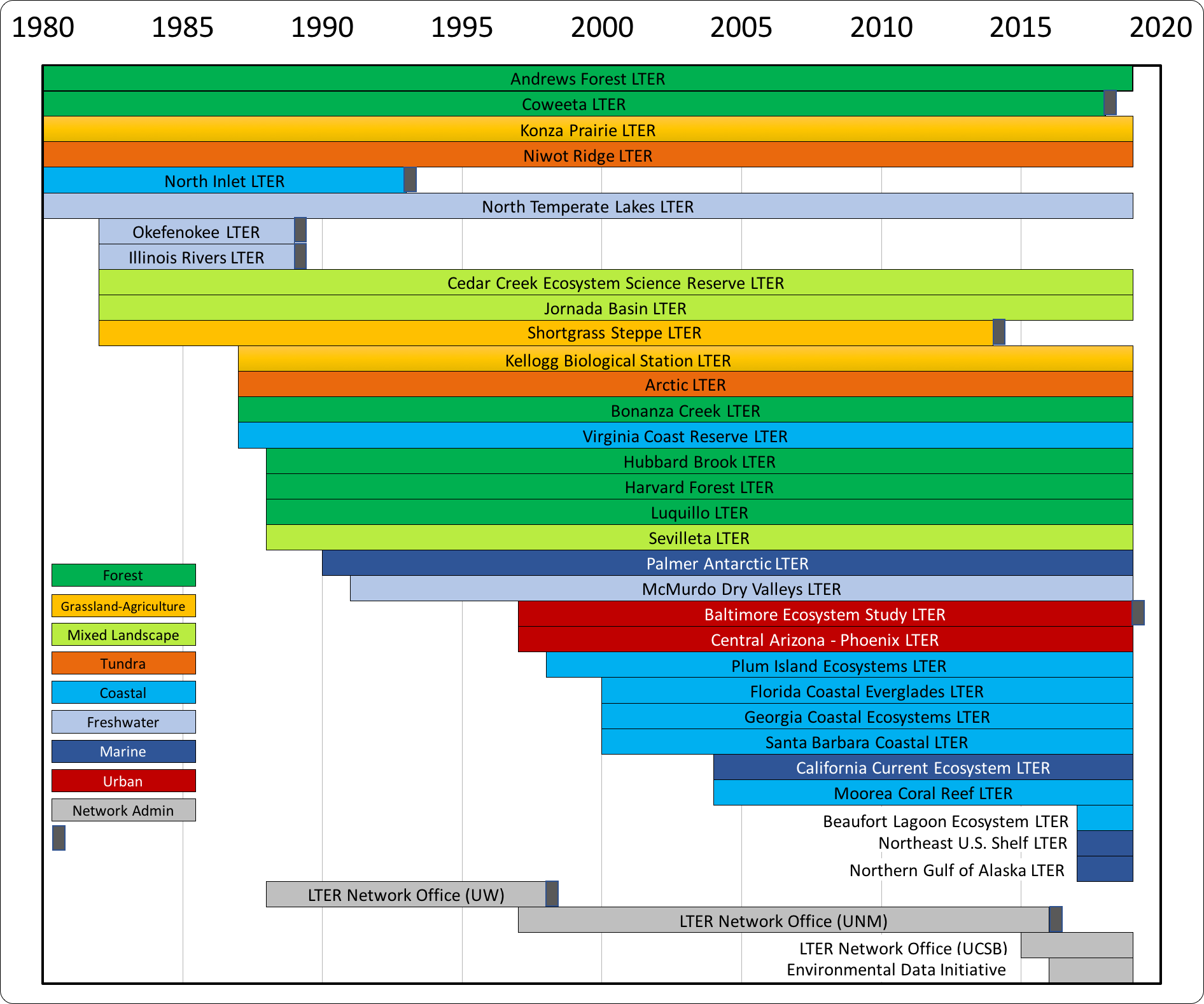
Credit: LTER Network Office
New to the Network? Or just losing track of the various leadership and policy transitions? With more than 40 years of activity, there is a lot to track. The timeline below lays out the major events and changes in the Network’s history, with links to background documents, presentations and publications.
2021
- The Minneapolis-St. Paul urban LTER is established.
- Coweeta LTER officially ends.
2020
- The 40th anniversary of the LTER Network coincides with the global COVID-19 pandemic, shutting down nearly all research for the summer of 2020 and continuing through the year into the following field season for the more vulnerable Arctic and Antarctic sites.
- The decadal review committee is formed and charged by NSF to review the last decade of the Network’s activities.
2019
- LTER Network Office receives continued funding for operation at the National Center for Ecological Analysis and Synthesis, UC Santa Barbara.
- Environmental Data Initiative receives continued funding for operation at the University of Wisconsin and the University of New Mexico.
- Diane McKnight (MCM) is elected to chair the LTER Science Council as Peter Groffman (HBR/BES) ends his term.
- The Baltimore Ecosystem Study site is not renewed.
2018
- All Scientists’ Meeting takes place at Asilomar.
2017
-
Researcher James McClelland sampling water during ice break-up in Kaktovik Lagoon, Alaska.
Credit: Kenneth Dunton, Marine Science Institute, The University of Texas at Austin. CC BY-SA 4.0Three new LTER sites receive NSF funding: Northeast U.S. Shelf (NES), Northern Gulf of Alaska (NGA), and Beaufort Lagoon Ecosystem (BLE);
- NSF-LTER Symposium titled Drought, Fire, Rising Seas: The Nature of Ecosystem Change addresses ecosystem vulnerability and resilience.
- Three new Synthesis Working Groups funded
- LTER Science Council Meeting held at Hubbard Brook LTER. Bylaws revised to reflect recent changes in Network organization.
- Long time LTER friend and Program Officer Henry Gholz dies in rock climbing accident.
- New LTER logo approved.
- Saran Twombly retires as NSF Program Director for LTER, honored at Ecological Society of America with a symposium: Planning for Serendipity: The Importance of Surprises in Long-Term Ecological Research
2016
- Environmental Data Initiative expands role of PASTA to serve broader Division of Environmental Biology community
- NSF issues a solicitation for new site proposals
- Nearly 50 LTER researchers attend the first Open Science Meeting of the International LTER Network
- 2016 Science Council Meeting held at NCEAS, hosted by Moorea Coral Reef Site
- First three Synthesis Working Groups funded under the new Network Communications Office model
2015
- The 2015 LTER All Scientists’ Meeting, From Long-term Data to Understanding: Toward a Predictive Ecology, was held at the YMCA of the Rockies in Estes Park, CO.
- LTER Network Communications Office established at the National Center for Ecological Analysis and Synthesis (NCEAS), University of California-Santa Barbara, with Frank Davis as director.
- LTER publishes 2014 Annual Report
2014
- LTER publishes 2013 Annual Report
- Shortgrass Steppe LTER becomes inactive
- NSF fails to renew Sevilleta LTER
- Scott Collins resigns as Chair of the LTER Network;
- Chair-Elect Peter Groffman becomes Chair of the LTER Network
- NSF issues a solicitation for proposals to manage the communication, education and outreach, planning, and synthesis activities of the Network
- LTER Schoolyard Book Series establishes website.
- The 13th annual NSF-LTER Symposium highlighted the use of scenarios.
2013
- Network Information System releases new LTER NIS Data Portal for accessing LTER Site’s data.
- 12th Annual LTER-NSF Mini Symposium held in Arlington, VA on February 28, 2013, download and view the presentations at The Globalization of Long Term Ecological Research
- On February 28, 2013, the U.S. and French long-term ecological research networks sign a Memorandum of Understanding committing both networks to site and scientist collaborations
- LTER publishes 2012 Annual Report in February 2013.
2012

- Triennial All Scientists Meeting (ASM): Visit http://asm2012.lternet.edu/for information regarding the ASM.
- The Network Information System Presents A Shareholder’s Intro to the LTER Data Co-op
- Henry Gholz is honored for his outstanding contributions to the LTER Network at the 2012 ASM.
- 11th Annual LTER-NSF Mini Symposium: The Challenge of a Sustainable Future: Long-term Ecological Research Offers New Answers
- The NSF conducts its Mid-Term Review of the LTER Network Office
- Scott Collins of Sevilleta LTER named President of the Ecological Society of America
- Michael Nelson is named the new Principal Investigator of HJ Andrews LTER
- Harvard Forest featured in NSF’s Special Report, Science Nation
- LTER Science as Art, exhibited at the 11th Annual Mini Symposium in Washington DC
- Special edition of BioScience guest-edited by David Foster of Harvard Forest LTER
- Saran Twombly replaces Nancy Huntly as Program Director for the NSF LTER Program
2011
- 10th Annual LTER-NSF Mini Symposium: Understanding Climate Change Through Long-Term Ecological Research
- NSF finalizes the 30 Year Review of the Long-Term Ecological Research Program:A Report of the 30 Year Review Committee
2010
- Ninth annual LTER-NSF Mini Symposium: Ecosystem Services in a Changing World
- The Long Term Ecological Research (LTER) Network is the recipient of the 2010 Distinguished Scientist Award by the American Institute of Biological Sciences (AIBS)
- Nancy Huntly replaces Todd Crowl as NSF Program Officer for LTER
- NSF initiates 30 Year review of the LTER Program
- Communication Committee created
- Data Advisory Council formed
- Network Coordination Committee created
2009
- Eighth annual LTER-NSF Mini Symposium: Ecological Connectivity and Climate in a Changing World: Perspectives from LTER
- Seventh LTER All Scientists Meeting – Estes Park CO
- LTER Network Office funded for cores services with separate ARRA funding for “Support and Cyberinfrastructure Development for Integrated Network Science in LTER”
- Henry Gholz goes on sabbatical from NSF
- Todd Crowl becomes Program Officer for LTER
- LTER/USFS “Clim/HydroDB” database transferred from Oregon State University to the LTER Network Office.
2008
- Seventh annual LTER-NSF Mini Symposium: Social-ecological systems in a changing world: Perspectives from long-term ecological research
- Agrarian Landscapes in Transition synthesis volume published (OUP)
- Ecology of the Shortgrass Steppe – SGS synthesis volume published (OUP)
- LTER Network Office submits renewal proposal and receives recommendation for full funding by NSF review panel
- Memorandum Of Understanding between the LTER Network and the National Phenological Network for Cooperation in Phenological Monitoring and Assessment
2007
- Sixth Annual LTER-NSF Mini Symposium: Cycles of Change in Social-Ecological Systems: Perspectives from Long-Term Ecological Research
- LTER Technology Committee is disbanded and duties assigned to the Information Management Committee and the LTER Network Office
- The Committee on Scientific Initiatives is formally disbanded and duties assigned to the Science Council
- Phil Robertson is elected as Chair of the LTER Executive Board and Science Council
- Principles and Standards for Measuring Primary Production volume published (OUP)
- LTER Cyberinfrastructure Strategic Plan published
- “The Decadal Plan for LTER” published, including an integrated research plan, a description of the EcoTrends project, a Strategic Plan for Education, a Strategic Plan for Cyberinfrastructure, a new governance plan, and Integrative Science for Society and the Environment
2006

Credit: LTER. CC BY-SA 4.0
Credit: LTER LNO
- Fifth Annual NSF-LTER Mini Symposium: LTER and Global Change
- Sixth LTER All Scientists’ Meeting – Estes Park, Colorado
- McMurdo Dry Valleys LTER publishes The Lost Seal, the second in the LTER children’s book series
- Structure and Function of a Chihuahuan Desert Ecosystem – JRN synthesis volume published; Oxford University Press (OUP)
- A new LTER governance structure is approved by the LTER Coordinating Committee, consisting of a Science Council and an Executive Board
- Peter Arzberger is named Chair of the LTER National Advisory Board
2005
- Fourth Annual NSF-LTER Mini Symposium: Coastal Research in LTER
- Mary Clutter retires as Assistant Director of the Directorate for Biological Sciences at NSF. Jim Collins is named to replace her.
- Jim Gosz resigns after 10 years as Chair of the LTER Coordinating Committee. John Magnuson is chosen as Interim Chair.
- The first LTER Graduate Student Collaborative Research Symposium takes place at Andrews Experimental Forest
- Long-Term Dynamics of Lakes in the Landscape – NTL synthesis volume published (OUP)
- Alaska’s Changing Boreal Forest – BNZ synthesis volume published (OUP)
- LTER Network Office “Strategic Plan” and “Implementation Plan” published
2004
- Third Annual NSF-LTER Mini Symposium: LTER Research Informing Land Management
- The first LTER Children’s book, My Water Comes from the Mountain, published by Moonlight Publishing
- Biodiversity in Drylands volume published (OUP)
- Idea for EcoTrends book developed at Alaska Coordinating Committee meeting
- Two new Sites join LTER Network:
- California Current Ecosystem
- Moorea Coral Reef
- The LTER Network receives a grant from NSF to conduct network-level strategic planning
2003
- Cooperative Agreement for the LTER Network Office renewed at the University of New Mexico
- Second Annual NSF-LTER Mini Symposium: Integration of Geosciences and Social Science within the LTER Program: Progress and Prospects
- Fifth LTER All Scientists’ Meeting at Seattle, Washington in association with the Estuarine Research Federation
- BioScience Special Issue on the US Long-Term Ecological Research Network
- Climate Variability and Ecosystem Response volume published (OUP)
- The LTER Coordinating Committee approves a formal set of bylaws for the LTER Network
- The U.S. ILTER Committee is formed
- “LTER 2010” report published in response to the LTER 20 Year review
- Scott Collins leaves NSF to become principal investigator of the Sevilleta LTER.
- NSF Announces special LTER competition for ocean sites
2002
- First Annual NSF-LTER Mini Symposium: LTER Network Major Research Accomplishments
- The Network Information System Advisory Committee (NISAC) is formed
- LTER Education Symposium and Education Representatives meeting held at the Sevilleta LTER – 20 LTER sites represented
- LTER Strategic Plan “LTER 2000-2010: A DECADE OF SYNTHESIS” published.
2001
- NSF commissions 20-Year-Review of the LTER Network (October, Albuquerque)
- Niwot Ridge site synthesis volume published (OUP)
- LTER Network celebrates 20th Anniversary
- LTER Education Strategic Plan published
2000
- Three New Coastal Sites Join Network:
Credit: SBC LTER
- Georgia Coastal Ecosystem
- Florida Coastal Everglades
- Santa Barbara Coastal
- Fourth LTER (and first ILTER) All Scientists Meeting– Snowbird, Utah in association with the annual meeting of the Ecological Society of America
- LNO hires William Michener as Associate Director for Project Development with the initial task of strengthening the relationship between LTER and the Organization of Biological Field Stations (OBFS)
- Scott Collins becomes Program Officer for the National Ecological Observatory Network (NEON); Henry Gholz becomes the Program Officer for LTER at NSF.
- NEON planning workshops begin
1999
- National Advisory Board reviews LTER Network
- NSF “Connectivity” funding supplements to LTER sites
- Social Science Committee created
- Committee on Scientific Initiatives created
- LTER Network and San Diego Supercomputer Center strengthen bonds by employing joint research staff
- NSF Announces special LTER competition for land margin sites
- Tom Callahan, long-time NSF program director and LTER supporter, passes away
- Knowledge and Distributed Intelligence Grant Funded: LTER Network Office, NCEAS, SDSC, and University of Kansas collaborate on the Knowledge Network for Biocomplexity
- Standard Soil Methods for Long Term Ecological Research published (Oxford University Press)
1998
- NSF proposal competition results in addition of new Land Margin Ecological Research (LMER) site: Plum Island Ecosystem LTER
- LTER Network signs contract to produce Science Synthesis Series with OUP
- Konza site volume published (OUP)
- McMurdo site volume published (AGU)
- Schoolyard LTER Supplements added to LTER grants ($15k/yr to each site)
- Publication of LTER site brochures initiated by the LTER Network Office
1997
NSF holds competition for new Land Margin LTER sites
- NSF announces special proposal competition for urban LTER sites
- March 15: Network Office officially begins operation from the University of New Mexico:
- Jim Gosz – P.I..
- John Vande Castle – Co P.I.
- James Brunt – Co P.I.
- LTER Network Office hosts special session of ESA: “Long Term Research in Ecology – Cross-Site Collaborations for the Future”
- October 15 – Bob Waide becomes Executive Director of the LTER Network Office
- Christine French from the Office of International Programs at NSF is posted to the Network Office
- NSF proposal competition results in addition of two new urban LTER sites:
- Central Arizona Phoenix
- Baltimore Ecosystem Study
1996
- Two LTER Sites Augmented with funding for regional-level research (CWT and NTL)
- Palmer site volume published (AGU)
1995
- Coordinating Committee Chair Jerry F. Franklin announces his retirement as Chair after more than 12 years of service
Credit: Stephanie Martin
- James R. Gosz is elected LTER Coordinating Committee Chair
- LTER National Advisory Board established
- Scott Collins replaces Tom Callahan as NSF program officer for LTER
- International LTER (ILTER) Network expands membership; James R. Gosz elected ILTER Network Committee (formerly Steering Committee) Chair
- LTER Executive Committee revises LTER workshop policy
- LTER Publications Committee develops plan for publication of Network research synthesis volumes
- NSF announces open competition for LTER Network Office cooperative agreement
- NSF announces the 1995 special competition for cross-site comparisons and synthesis at LTER and non-LTER sites. Thirteen awards ranging from $150,000 to $200,000 are given.
- 1995 NSF/DOE/NASA/USDA Joint Program Awards, Terrestrial Ecology and Global Change (TECO), are announced. There are seven LTER recipients, including researchers at Bonanza Creek, Cedar Creek, Central Plains, Harvard Forest, H.J. Andrews and Jornada.
1994
- NSF announces a special competition for cross-site comparisons and synthesis at LTER and non-LTER sites as well as international research awards in response to the 10-year review of the LTER Program. Nine grants ranging from $109,353 to $200,000 are awarded to LTER and non-LTER U.S. sites, and sites in Ireland, Scotland, Costa Rica, Argentina and Russia.
- NSF announces a special competition for augmentation of LTER projects for regionalization, comprehensive site histories, and increased disciplinary breadth. North Temperate Lakes and Coweeta Hydrologic Laboratory receive awards of $499,959 and $498,906, respectively.
- LTER Network assesses leadership and governance in response to 10-year review and in preparation for the election of a new Coordinating Committee chair
- LTER Publications and Synthesis committees established
- LTER Network World Wide Web site established at Network Office
- First International LTER (ILTER) Steering Committee meeting, Rothamsted, U.K.
- NSF and U.S. Forest Service sign a Memorandum of Agreement to cooperate/collaborate in LTER Program research
- NSF and the National Biological Service sign a Memorandum of Agreement to cooperate/collaborate in LTER Program research
1993
- NSF Antarctic research proposal competition results in addition of new McMurdo Dry Valleys, Antarctica LTER site
- NSF commissions 10-Year Review of the LTER Program
- Third LTER All Scientists Meeting, Estes Park, CO (First LTER web-based meeting content)
- International LTER Summit held (Argentina, Brazil, Australia, Canada, Chile, China, Costa Rica, France, Hungary, Mexico, Mongolia, New Zealand, Russia, Taiwan, United Kingdom, and the United States represented)
- International LTER (ILTER) Network established, Jerry F. Franklin (U.S. LTER Chair) is elected ILTER Steering Committee Chair
- LTER Network Internet (gopher) server established at Network Office
- LTER All-Site Bibliography developed and put online in searchable form
- LTER Core Data Set Catalog put online in searchable form
- LTER Personnel Database put online in searchable form
- North Inlet LTER site withdrawn; 18 LTER sites remain in Network
1992
- NSF announces new Antarctic LTER site competition with funds from Polar Programs and Environmental Biology divisions
- LTER Coordinating Committee, at the request of NSF, develops an eight-year vision–LTER 2000–for the creation of a global environmental research network based upon approaches established in the LTER Program
1991
NSF Antarctic research proposal competition results in addition of new site:
- Palmer Station, Antarctica LTER
- Geographic Information Systems (GIS) working group analyzes the status of LTER Network technical supplements and assesses future technical needs (recommends enhanced Internet connectivity, individual site remote sensing capability, annual acquisition of remote sensing data, site archival storage capability, additional GPS units, enhanced site database software capabilities, automated field data collection)
- Global Positioning Systems (GPS) units acquired for shared LTER site use and GPS training provided for representatives from all sites
- Network Office creates Communications System Analyst position
1990
- NSF announces Antarctic LTER site competition, supported by funds from Polar Programs and Environmental Biology divisions
- LTER Coordinating Committee develops site data management policy guidelines
- LTER Core Data Set Catalog developed and published
- Second LTER All Scientists Meeting, Estes Park, CO
- LTER Network Office establishes LTER Geographic Information Systems/Remote Sensing Laboratory at University of Washington-Seattle
- Franklin, J.F., C. Bledsoe and J.T. Callahan. 1990. Contributions of the Long-Term Ecological Research Program. BioScience 40:509-523.
1989
- NSF conducts national LTER Program review
- Coordination grant is awarded to University of Washington-Seattle (Jerry Franklin, PI). LTER Network Office enlarged and established on the University of Washington campus, in the College of Forest Resources.
- Network Office creates Publications/Public Information Coordinator position
- Network Data Manager (Rudolf Nottrott) is hired and Network-wide electronic mail forwarding system is developed. LTER personnel database from NSF is incorporated.
- LTER Technology Committee identifies and recommends technology requirements and criteria to meet primary LTER Network research goals (global change assessment and comparative studies of ecological phenomena and theories). Report entitled “LTER Technology Report for the LTER Strategic Plan” is referred to as “Gosz Technology Report” after chair Jim Gosz.
- LTER working group develops “Global Change Research Action Plan”
- LTER Network electronic bulletin board established at Central Plains Experimental Range site
- Network Office hires Program Assistant for meeting and travel coordination
- Network Office hires John Vande Castle as Network Manager and acquisition of satellite imagery and aerial photography for all sites begins
- First issue, Databits, LTER data managers electronic newsletter
- LTER-Chinese Ecological Research Network (CERN) exchange/collaboration develops
- First LTER Network Strategic Plan resulting from 1989 LTER Coordinating Committee Meeting at Harvard Forest published: “A long-range Strategic Plan for the Long Term Ecological Research Network”
1988
- NSF proposal competition results in addition of three new sites:
-
- Luquillo Experimental Forest
- Sevilleta National Wildlife Refuge
- Harvard Forest
- and two are withdrawn (Illinois Rivers and Okefenokee)
-
- NSF Advisory Committee on Scientific & Technological Planning for LTER identifies scientific issues addressed by the sites and recommends Network-wide capabilities to address them. Report is referred to as “Shugart Report” after chair H.H. Shugart.
- LTER Climate Committee reviews research and understanding of climate variability and ecosystem responses of the LTER sites (Greenland and Swift 1990)
- Minimum Standard Installation (MSI) for LTER site data management developed
- NSF creates LTER Research Coordinator position at Division of Environmental Biology to encourage LTER cross-site research efforts (Caroline Bledsoe hired)
- First comprehensive directory of LTER personnel is compiled by Bob Robbins and Caroline Bledsoe at NSF and printed at the LTER Network Office
- John L. Brooks, a key developer and supporter of the Long- Term Ecological Research Network, retires from the National Science Foundation
1987
- An NSF proposal competition results in five new sites added:
- Arctic Tundra
- Bonanza Creek Experimental Forest
- Hubbard Brook Experimental Forest
- Kellogg Biological Station
- Virginia Coast Reserve
- First issue, LTER Network Newsletter published
- LTER Intersite Climate Committee summarizes climates at first 11 LTER sites (Greenland 1987)
- NSF creates LTER Technology Development position at Division of Environmental Biology (Robert Robbins hired)
- NSF announces fourth call for long-term ecological research proposals
1986
- LTER Intersite Climate Committee (formerly Meteorological Committee) develops standards for meteorological measurements at LTER sites (Greenland 1986; Swift and Ragsdale 1985)
- NSF announces third call for long-term ecological research proposals.
1985
- First LTER All Scientists Meeting, Lake Itasca, MN
1984
- Callahan, J.T. 1984. Long-term ecological research. BioScience 34(6):363-367.
1983
- NSF conducts a national review of the LTER Program
-
Jerry Franklin replaces Marzolf as LTER Steering Committee (now Coordinating Committee) chair
- Coordination grant awarded to Oregon State University (Jerry Franklin, PI). LTER Network Office established
1982
- Representatives of five new sites join Steering Committee
- First Data Management workshop, Champaign-Urbana, Illinois
- First LTER Meteorological Committee (now Climate Committee) meeting, Coweeta Hydrologic Laboratory
- Steering Committee creates a policy for workshops supported under the coordination grant
1981
- Dick Marzolf (Konza Prairie) serves as first LTER Steering Committee Chair. NSF awards a coordination grant to Kansas State University (with Marzolf as PI).
- An NSF proposal competition results in five new sites added:
- Central Plains Experimental Range (now called Shortgrass Steppe)
- Okefenokee
- Illinois Rivers
- Cedar Creek Natural History Area
- Jornada Basin
1980
An initial set of six sites is selected from proposals submitted and funded at $300,000 per year:
- North Temperate Lakes
- H.J. Andrews Experimental Forest
- Coweeta Hydrological Laboratory
- Konza Prairie
- North Inlet Marsh
- Niwot Ridge
- LTER lead scientists meet in Washington, D.C. and constitute a steering committee to begin the tasks of LTER communication and coordination and accommodation of mutual goals
- NSF announces second call for long-term ecological research proposals
1979
- NSF announces a call for proposals for pilot projects in long-term ecological research with goals of 1) initiating the collection of comparative data at a network of sites representing major biotic regions of North America, and 2) evaluating the scientific, technical and managerial problems associated with such long-term comparative research.
- The NSF sponsors the third workshop to initiate and maintain close consultation with the ecological sciences community.
1977 & 1978
- The National Science Foundation (NSF) sponsors workshops to initiate and maintain close consultation with the ecological sciences community. At these workshops the philosophy of collaborative research is developed and a centralized working hypothesis approach to collaboration proposed. Five core areas of research are defined to orient long-term ecological research projects toward question/hypothesis formulation and resolution over long time and broad spatial scales.

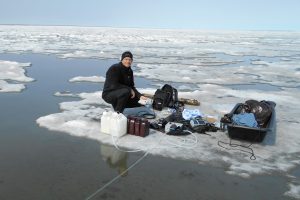
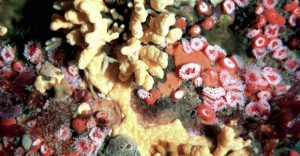
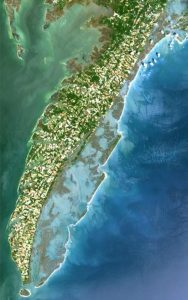 NSF holds competition for new Land Margin LTER sites
NSF holds competition for new Land Margin LTER sites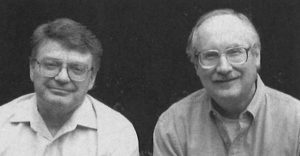
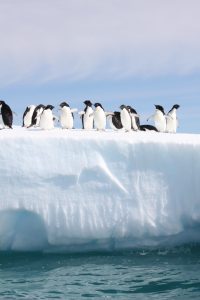 NSF Antarctic research proposal competition results in addition of new site:
NSF Antarctic research proposal competition results in addition of new site:
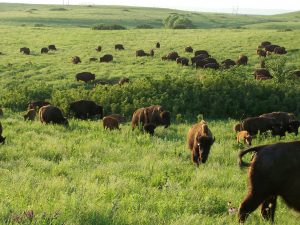 An initial set of six sites is selected from proposals submitted and funded at $300,000 per year:
An initial set of six sites is selected from proposals submitted and funded at $300,000 per year: